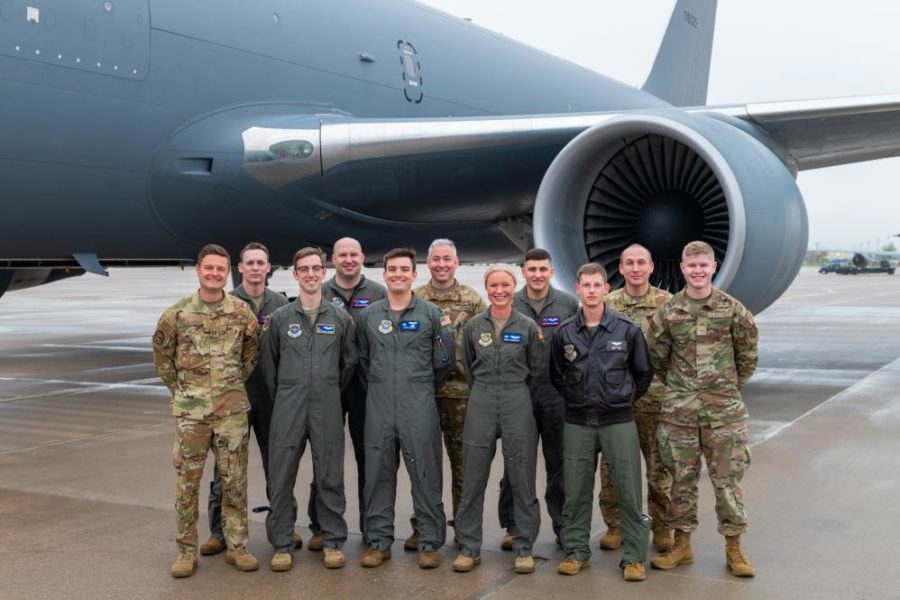A KC-46 Pegasus crewed by Airmen from the 22nd Air Refueling Wing flew for more than 24 hours, establishing a new Air Mobility Command record and covering more than 9,000 miles, the Air Force announced.
The 24.2-hour, record-breaking flight—which lasted from May 5 to 6—was intended to gather data on the “feasibility, limitations, potential risks as well as unique benefits of the KC-46 for long-duration flights,” according to a service press release.
Six pilots, three boom operators, a photojournalist, and a physician assistant took part in the flight, with two-pilot teams swapping out every four hours while a backup pilot team gathered data and took notes. The physician assistant onboard monitored the aircrew to ensure their safety and the safety of the mission.
“In flight medicine, our goal is to preserve not only the health and safety of the aircrew, but also to preserve the safety of the missions those aircrew perform,” Maj. Cory Henderson, 349th Air Refueling Squadron aeromedical physician assistant, said in the statement. “For this mission, we’ve tried to do that from the start of planning and now through the execution phase.”
During the flight, the KC-46 performed dry contacts with another KC-46, refueled four Marine Corps F-35s, and was itself refueled by another KC-46. The flight path included both the northern and southern borders of the U.S. as well as the East and West Coasts.
On social media, aviation enthusiasts tracked the flight path, which started and ended at McConnell Air Force Base, Kan., passing over roughly three dozen states.
Planning for the flight took several weeks and required in-the-air adjustments, according to the Air Force, as severe weather in certain areas forced the crew to adjust the route.
“This 24-hour sortie is a critical step in the operational evolution of tankers and the role the KC-46 plays in that,” Col. Nate Vogel, 22nd Air Refueling Wing commander, said in the statement. “This sortie helps mobility forces identify how best to operate on long-duration sorties from human, to machine, to mission aspects. Long-duration flights are inherently full of risk, and conducting this operation now allows us to identify those risks, and then build and apply mitigations in a more controlled environment.”
This new record also marks a positive milestone for the KC-46, which is expected to replace the KC-135 but has been plagued by issues throughout its development. The biggest problem, the troubled Remote Vision System, has cost hundreds of millions, delayed the declaration of full-rate production, and forced the tanker to stop refueling certain planes.
Most recently, though, the Pegasus has been cleared to refuel 85 percent of the fleet and conducted its first refueling of an international aircraft, a Spanish EF-18 Hornet.
While the May 5-6 flight marks a new record for AMC, the Air Force has had previous experience with lengthy flights. In 2001, B-2 bombers flew from Whiteman Air Force Base, Mo., across the Pacific to strike Afghanistan at the start of Operation Enduring Freedom, spending upwards of 40 consecutive hours in the air. Also during Operation Enduring Freedom, a pair of F-15E crews flew a sortie of 15.5 hours, the longest fighter combat sortie ever.






